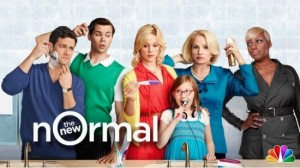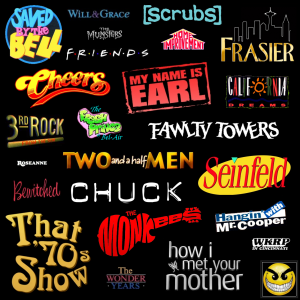
With a record 29 sitcoms being pitched for this year’s US fall TV pilot season, such as Go On and The Mindy Project, you could be excused for wondering why anyone would suggest that the sitcom is in terminal decline?
But it wasn’t that long ago that commentators were suggesting that very thing. Sitcoms, they opined, had lost their mojo.
It was alleged that sitcoms, for so long the mainstay of US television were no longer funny or engaging, or would soon be replaced by reality TV, and lots of it. The concern expressed by these sitcom doomsayers if it held up would have had profound implications for the TV industry.
This is not simply because a great sitcom will attract a large number of viewers which in turn draw in advertisers eager to promote their wares to them.
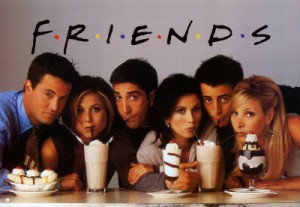
It is also because they are the sorts of shows that don’t have to be watched in any particular order, and are also of a length ideally suited to plugging holes in a schedule, all of which makes them perfect for syndication. This is where the original broadcast network sells a show to local TV stations that may not be affiliated with the original broadcast network. For instance, a show like Friends, which originally aired on NBC, may turn up in a local market in repeat on an ABC or FOX channel. These channels always need new material, and the networks are only too happy to supply them so it’s a lucrative business all around.
So if the sitcom was really in a death spiral, then network TV, already besieged by the rise of the internet, and cable TV, was in serious trouble.
But just how accurate were these claims about the demise of sitcoms? Were they simply alarmist misinterpretations of a downward trend or accurate takes on the longterm health of one of TV’s mainstay genres?
Writing on smrt-tv.com in July 2005, Sam Daigneault, reflecting on the “sitcom is dead” debate, had this to say:
“Now, you might remember that not even five years ago, sitcoms were everywhere. Not only were they everywhere, but everybody was talking about them.
Seinfeld was declared one of the best shows on television, ever. Friends seemed to gain momentum with each passing season, spawning a rotating door of imitators, mostly produced by NBC to follow it and keep its audience, with no success. Frasier was winning Emmy after Emmy, and Everybody Loves Raymond went from cult hit to beloved classic.
However, as time passed, the most prominently successful shows finished their runs and viewers were left with only the mediocre knock-offs (King of Queens, Yes Dear) and bad time-fillers (According to Jim, Yes Dear) to watch, and many people decided to watch reality TV or switch to cable for laughs instead.
A few sitcoms have managed to become success stories, with Two and a Half Men and Joey cracking the top 20, but these shows will never be beloved on the same level as classic sitcoms such as Cheers or M*A*S*H . They will never be talked about at the water cooler, or featured on the cover of Time Magazine, or inspire people to gather together in living rooms or bars to watch them. Gone are the days when the traditional sitcom truly captured the public’s attention and imagination.”

What Sam is essentially pointing out is that sitcoms, like so many genres in television, are cyclical. The creative pendulum swings one way and we are gifted sitcom gems like Cheers, M*A*S*H, Friends, Frasier and Seinfeld. Then it swings the other and shows like The King of Queens and Two and a Half Men sneak into the schedule.
Of course when there has been such a rich run of high-quality sitcoms as there was in the 1990s into the mid-Noughties, and then they all run their course with no obvious successors in place – this particularly affected NBC who lost many of its highest ratings programs at the time – their presence is particularly missed.

It took the networks a few years to find another treasure of trove of quality sitcoms, with shows like Big Bang Theory, Modern Family, How I Met Your Mother, Parks and Recreation, The Office, New Girl and Cougar Town and Community, only really making their presence felt in the last few years.
But while the free-to-air networks in the US were struggling to find sitcoms that could stand toe-to-toe quality-wise with classics like Friends and Will and Grace, prompting the hand-wringing and pronouncements that the future of sitcoms was doomed, cable TV was quietly and unassumingly going about the business of creating some classic comedic television.

But as Sam Daigneault points out, no one really noticed … at first at least.
“However, what nobody seemed to notice is that somewhere along the line, a few cool, innovative single-camera shows had found devoted audiences. Medical laffer Scrubs managed to survive and carve out a fair-sized audience for itself despite being constantly moved around on NBC’s schedule, and it even survived the dreaded post-Friends slot. And Malcolm in the Middle has managed to do well for itself, helping to carry Fox’s Sunday night lineup and even getting a few Emmy nominations.”
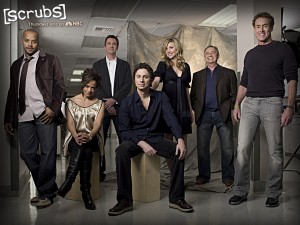
What defined these shows, and other critically acclaimed comedies that joined them such as Arrested Development, Curb Your Enthusiasm, and The Larry Sanders Show was the use of a single camera style of shooting, an inclination to improvisation which lent the show an air of freshness and spontaneity, and the absence – the blessed absence in the eyes of many sitcom aficionados – of a laugh track or studio audience.
There was a photo-real, documentary-style to the shows, which was realised in such a way that you felt like you were eavesdropping in on the conversations of very clever, immensely funny people. They made not have found the same large audiences that shows like Friends did, but they were loved and intensely appreciated by their loyal core audiences, and most importantly they were innovative and funny.
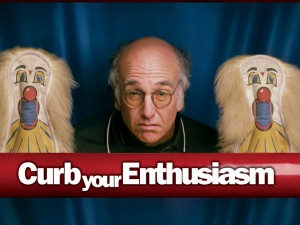
Daigneault saw them as the harbingers of a new era in comedy, a marked break from the sitcoms that have come before:
“These shows have plots that move forward each week, even sometimes containing elements of drama. The characters grow older, they do surprising things, and they earn your sympathy and sometimes your scorn. These shows are offbeat and intelligent, with the jokes coming from all directions, sharing similarities with animated comedies …
“These shows are the new face of television comedy. They are pioneers paving the way for better and more innovative shows to come.”

And so, as he predicted, it has come to pass. Sitcoms in the new sitcom era, by and large eschew large tracks, experiment with all manner of interesting plot devices, Community chief among them, and favour the documentary style of storytelling, with Modern Family even getting the characters to speak directly to camera as if they are bing interviewed.
These are all shows that are on broadcast TV but they are imbued with the DNA of the cable comedies and the new style of sitcom production that they pioneered and popularised. In fact so prevalent have these trends become, that shows that do use a laugh track such as Two and a Half Men are jarring, standing out like the proverbial sore thumb.
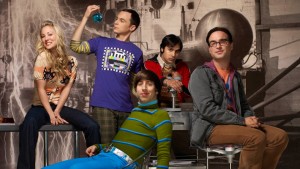
One of the few new shows that does manage to get away with using a laugh track intermixed with studio laughter is The Big Bang Theory. But by and large, laugh tracks and their attendant insincere “look at me, I’m FUNNY!” air of desperation are fading onto oblivion and new shows are relying more and more on simply being funny.
Whatever form the new crop of sitcoms take though, and several in the new season such as the aforementioned The Mindy Project and Go On, and The New Normal look extremely promising, I think it’s safe to say that the sitcom is far from dead.
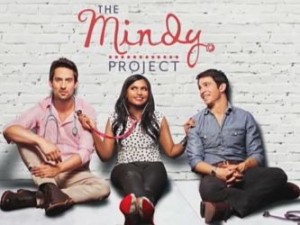
It’s a sentiment shared by David Blum, who as the critic at large of The New York Sun wrote in an op-ed The New York Times in May 2007 where he said (and his words still have resonance five year’s later coming into this year’s new US season):
“They fulfill our need for group experience — all of us laughing along with a studio audience at the comforting cadence of sitcom humor.
“That’s why this fall’s network schedules will try again to capitalize on the half-hour format, and will for years, maybe decades to come.”
